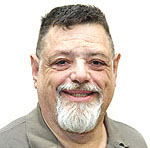‘I’ ON CULTURE
The number of children being abused and bullied in schools around the country is on the rise, and, unfortunately, school administrators seem to be doing a lot of it. We have headlines about a special-needs child in a Pennsylvania high school who, because he was bullied by a group of kids, recorded them on his iPad as a way of proving the facts. Did the school’s administrators help protect the child and punish the bullies? Of course not. The boy was arrested for making the recording, and nothing at all happened to the young thugs.
Perhaps the principal took them for ice cream to make them feel better. Then, a crazy judge decided that even though the boy had followed every tiny bit of procedure set down by the school, he was still guilty. Finally, after national publicity, a district attorney decided to drop the whole thing and let the boy go back to school. And no one in any position to protect the child within the system did so.
This has become common. One 5-year-old was suspended because a counselor saw that a pastry he was eating was, after a few bites, shaped like a pistol. No worry about the damage to the boy. A 6-year-old who kissed a female classmate on the cheek was labeled a “sex offender.” That should do wonders when he applies for college.
The stories keep multiplying. Girls caught with Midol get tagged under “zero tolerance” drug rules that were originally instituted to protect against heroin. After all, when you have zero tolerance, there is no difference, at least in the heads of the brainless. There was a news story last year about a kid in Texas who was asthmatic and saw one of his fellow students, who he knew had the same problem and the same medication in her inhaler, collapse. She had forgotten her inhaler, and he used his instead. The police gave him an award for saving a life, and his school suspended him.
Back when I was a school administrator, I sometimes resented guidance counselors. They would fight for students even when they might not be worthy. They were fierce defenders, using the argument that “every child needs an advocate.” And they saved a lot of kids. Today, some counselors seem most intent on becoming elements of an anti-child SWAT team. A kid looks the wrong way at someone else, punish him. A 6-year-old wanting to show affection, brand him a sex offender. I just heard about a school up north that sent out a flier about “fighting bullying.” What a child should do is to ignore it, certainly not “tattle” to administrators. After all, if that happens, the school leadership might just have to do something about it. And the most important thing: Do not fight back at all if you are being attacked. To defend yourself, you are in as much trouble as the older, larger kids who are hitting you.
There are some teachers who are bullies; they want kids who behave perfectly. The nose-in-her book little girl is their ideal — never challenging or creating a problem. No wonder boys are increasingly at risk; most do not do very well acting like girls. They may be demanding and take up more class time than teachers want to give. It is far easier to provide drugs to keep them quiet.
School leaders have in many cases become the biggest bullies of all. Of course, some of them were bullies when they were in school. Others, who were among the bullied, now enjoy being far too strong to be victims and side with the strongest elements. Of course, these same administrators have lawyers ready to back them every inch of the way, and school boards that worry that if they allow for ambiguities, they will face lawsuits.
So children suffer and educational leaders wonder why more parents are moving their children to charter schools. I believe very strongly in public schools; they are a centripetal force pulling us together as a nation. I worked in them for more than a third of a century. But too often, leaders forget that children are infinitely varied as they grow up. Childhood is a precious time, and students need to be cherished. We need those type of guidance counselors.






